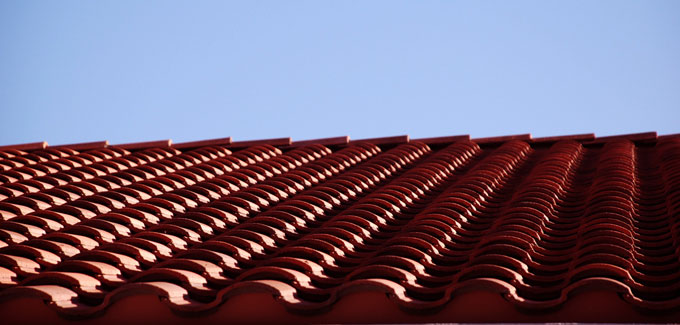
In central and southeast Texas buildings in the summer collect a great amount of heat. Cooling and energy bills definitely show the impact of heat accumulation in a Houston roofs. Many homeowners simply resort to turning the AC on when the temperature in the house becomes uncomfortable. However, the best way to combat warmer temperatures is with a roofing system that has materials specially made to reflect heat build-up and to help release trapped energy stored as heat.
Traditional roofing materials like asphalt shingles, are extremely popular because of their pricing and overall costs. They often are a little more affordable than other types of roofs. However, that is just the installation costs. Homeowners should remember that every month, they are paying for lower grade materials in the form of cooling costs during the summer (and heating costs during the winter). There are a few material options that home owners should think about.
Barrier Protection on Both Sides of the Roof
Overlays are a cool roof coating that is applied to the outside layer of the roof material (shingles) as a sealant. On the underside of a roof an underpinning called a radiant barrier should be used. Often reflective material and specialized sprays are used in the attic space to keep heat out of a home.
Radiant barriers are often applied using a “Built-Up Roofing” (BUR). Installation costs of BUR can vary between roofing contractors in Houston and are directly related to the roofer’s experience. An inexperienced roofer can end up costing more because of the longer build time.
Clay Tiles
Today’s clay tiles used in Houston roofing come in light colors to help with reflecting the sun’s rays. Clay tiles also contain paint treatments that make them look like traditional terra cotta tiles, but with added weatherproofing properties.
Clay tiles undergo baking to remove porous spaces and have an “S” shape to help with interlocking neighboring tiles. Clay tiles are often heavier than traditional roofing materials, requiring a sturdy roofing frame for proper support.
Green Roofs
Using a roofing system that has worked for centuries, green roofs offer a great deal of energy savings. Green roofs use a layer of vegetation to cover the roof, absorbing the energy from the sun. To protect the roof against leaks, a water proof barrier is installed between the layer of plant life and the actual roof.
Solar Roofing Systems
There is not much you can do about the sun, but you can make the sun work for you. Solar roofing systems provide homeowners the ability to capture the sun’s energy and use it in home. Solar roofing systems afford homeowners the ability to greatly reduce or even eliminate energy costs during the day.
Solar roofs also offer homeowners the ability to generate revenue as well. As the home uses current energy stores, less energy is required from the local grid to supply a home. When homes run exclusively on stored energy, the excess energy produced can be resold back to the grid.
White Flat Tile
One the best ways to reflect heat and energy is by using white flat tile on your roofing system. Roofing your Houston home with white flat tile can reflect as much as 77% of the sun.
During the summer months one the best ways to save costs is by reroofing your home. However, reroofing your home is not always feasible. At the very least homeowners should have a professional roofing contractor inspect the home for possible leaks and exposure to the outside. Local Houston roofers like Schulte Roofing have specialized tools that will help locate and identify cooling loss across the roof and home easily.
